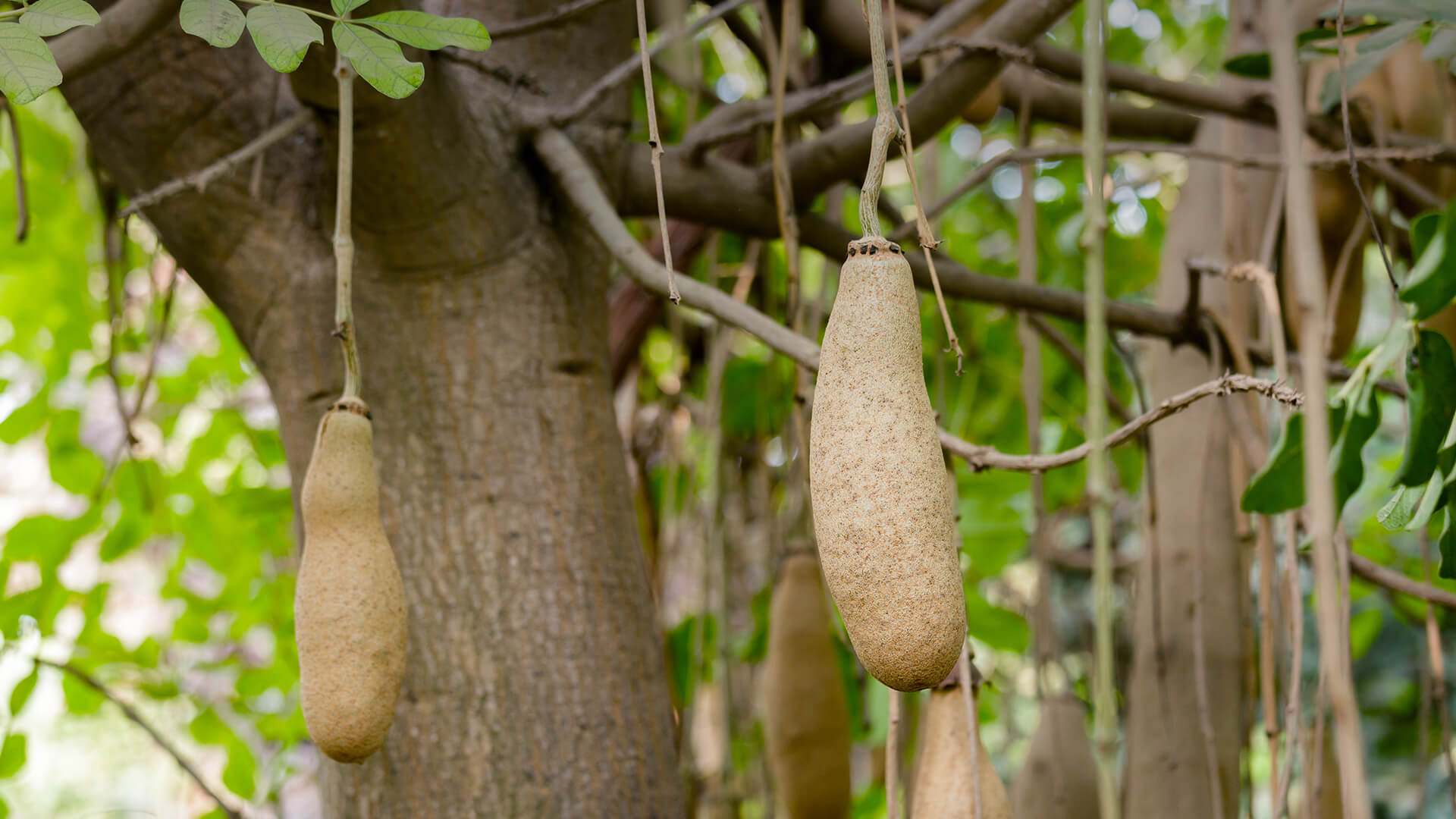Absolutely! Here’s a long article about the Sausage Tree plant (Kigelia africana), formatted with `
` and `
` tags instead of “.
The Sausage Tree, scientifically known as Kigelia africana, is a truly extraordinary and fascinating tree native to tropical Africa. Its unique, sausage-like fruits, coupled with its medicinal properties and cultural significance, make it a subject of great interest to botanists, herbalists, and nature enthusiasts alike.
Introduction to Kigelia africana
Geographical Distribution

The Sausage Tree is widespread across tropical Africa, from Senegal in the west to Eritrea in the east, and southwards to northern South Africa. It thrives in a variety of habitats, including savannahs, woodlands, and riverine forests.
Botanical Characteristics
Leaves: The leaves are pinnately compound, meaning they consist of multiple leaflets arranged along a central stem. They are typically dark green and have a slightly hairy texture.
The Unique Fruits of the Sausage Tree
The fruits of Kigelia africana are truly remarkable. They hang from long, flexible stalks, which allow them to swing in the wind. This helps to disperse the seeds when the fruits eventually fall and break open.
Fruit Development
The fruits take several months to mature, and they can remain on the tree for a long time. When ripe, they are heavy and fibrous, containing numerous seeds embedded in a pulp.
Uses of the Fruits

Traditional Medicine: The fruits have been used in traditional African medicine for centuries to treat a variety of ailments, including skin conditions, ulcers, and rheumatism.
Medicinal Properties and Uses
Bioactive Compounds
The plant contains various bioactive compounds, including:
Flavonoids
Traditional Medicinal Uses
Skin Conditions: The fruit pulp is used to treat skin conditions such as eczema, psoriasis, and fungal infections.
Modern Research
Antimicrobial Activity: Studies have shown that extracts from Kigelia africana possess antimicrobial activity against various bacteria and fungi.
Ecological Significance
Pollination
The tree’s nocturnal flowers are primarily pollinated by bats, which are attracted to their strong scent and nectar.
Seed Dispersal
The heavy fruits fall to the ground, where they are sometimes eaten by animals, helping to disperse the seeds. Elephants and other large mammals are known to consume the fruits. The fruit also rolls away from the tree, assisting in seed dispersal.
Habitat Provision
The large, spreading canopy of the Sausage Tree provides shade and shelter for a variety of animals.
Cultural Significance
Traditional Beliefs
In some cultures, the tree is considered sacred and is associated with fertility and healing.
Uses in Crafts
The hard, woody fruits are sometimes used to make crafts and musical instruments.
Symbolism
The tree’s unique appearance and medicinal properties have given it a place in folklore and traditional ceremonies.
Cultivation and Conservation
While Kigelia africana is relatively widespread, it faces threats from habitat loss and overexploitation.
Cultivation
The tree can be propagated from seeds or cuttings. It prefers well-drained soil and a sunny location.
Conservation Status
While not currently listed as endangered, the tree’s populations are declining in some areas due to deforestation and unsustainable harvesting of its fruits.
Challenges and Future Research
Despite its numerous benefits, there are still challenges associated with the use of Kigelia africana.
Toxicity
The raw fruits can be toxic if ingested in large quantities.
Standardization of Extracts
Further research is needed to standardize the extracts used in medicinal preparations, ensuring consistent quality and efficacy.
Future Research Directions
More clinical trials are needed to validate the traditional uses of Kigelia africana.


:max_bytes(150000):strip_icc()/luffa-plant-profile-4796761-hero-7967b71fd40945749c7513e3c90d33a5.jpg?resize=200,135&ssl=1)
:max_bytes(150000):strip_icc()/SPS-calathea-ornata-04-f03b60a264fd49e1b8abf15282fcf607.jpg?resize=200,135&ssl=1)